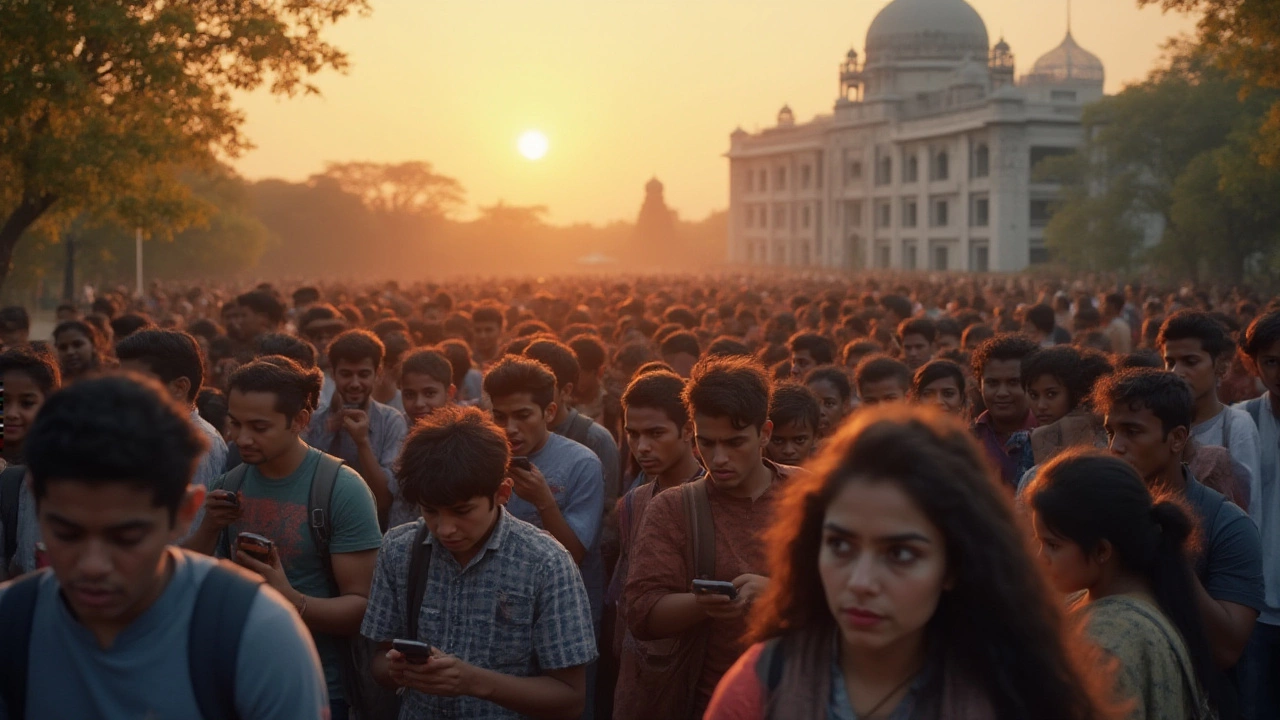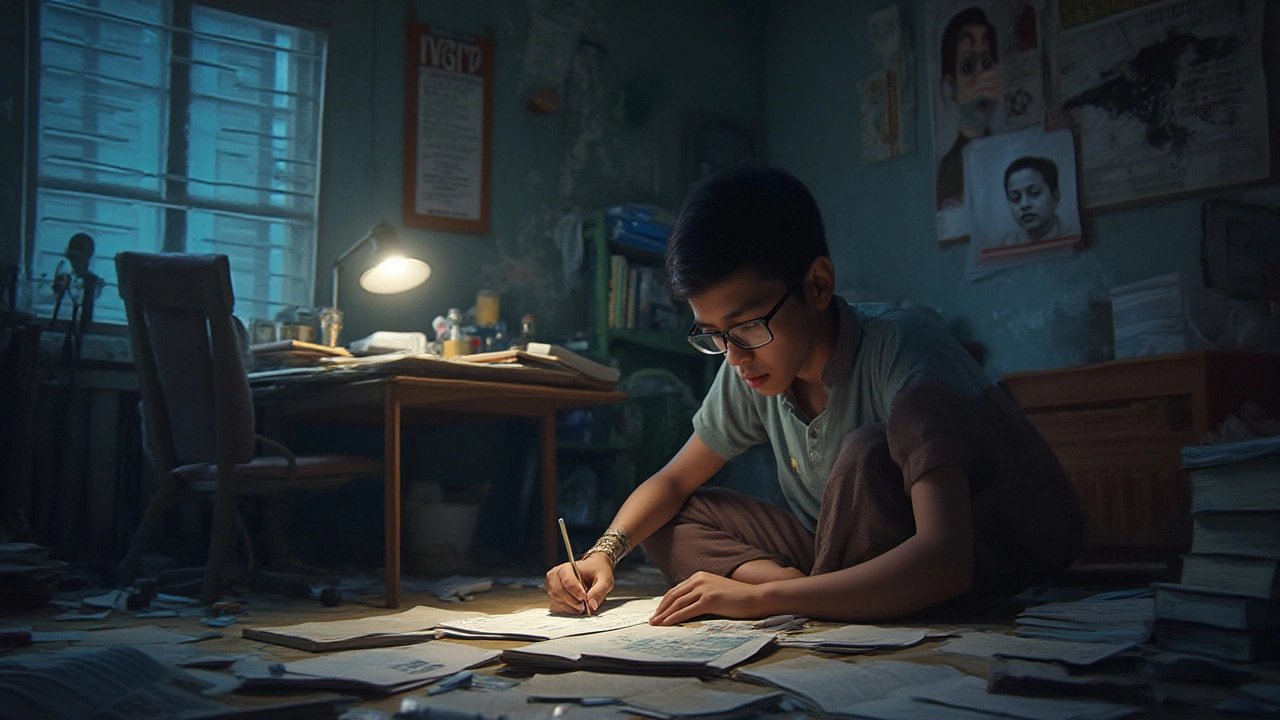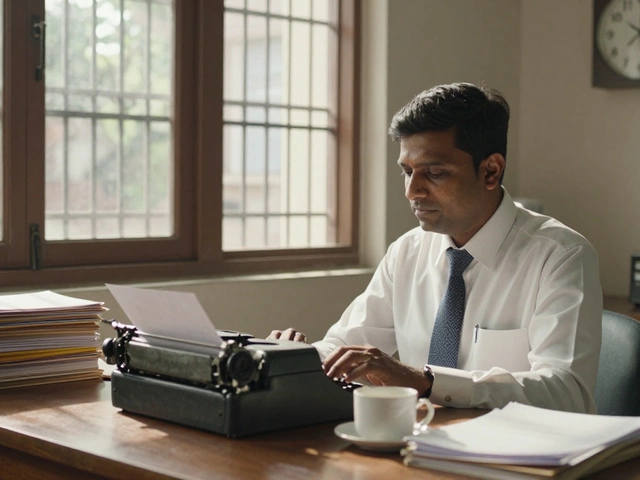
If you asked a bunch of teens in India about their dreams, chances are a good number would mutter 'IIT Bombay'—then quickly follow up with a nervous laugh. The buzz around this place is intense. The campus is legendary, the alumni land top gigs. But ask anyone in the know, and they'll tell you: getting in? It's brutal. While people around the world know Oxford or Stanford, in India, IIT Bombay is a household name—and a rite of passage that only the elite can claim. Ready to separate the hype from the gritty reality?
The Gatekeeper: Understanding the IIT Bombay Admission Process
Every year, nearly 1.5 million students across India—and even abroad—give it a shot. That’s not a typo: one and a half million hopefuls. But only a sliver end up even eligible to apply, and an even smaller handful walk onto the hallowed grounds of Powai. To start, students need to clear the Joint Entrance Examination (JEE), split into two main rounds: JEE Main and JEE Advanced. If the word 'Advanced' sounds scary, that’s because it is. It's considered one of the toughest undergraduate exams anywhere—more than the SAT or ACT or almost anything else you can name.
Here’s where it gets real. Only around 2.5 lakh (250,000) candidates out of roughly 1.5 million qualify for JEE Advanced. After that, just 16,000 candidates actually get a seat in an IIT. IIT Bombay, perennially one of the top picks, offers around 1,200 undergraduate seats every year. Competition? Think 1,250 aspirants fighting for every single seat. This isn’t just ambitious. It’s a frenzy.
Here’s a quick look at the numbers stacked up:
| Stage | Candidates | Seats Available (IIT Bombay) |
|---|---|---|
| JEE Main Registration | 1,500,000 | - |
| Qualified for JEE Advanced | ~250,000 | - |
| JEE Advanced Takers | ~180,000 | - |
| IIT Bombay BTech Seats | - | ~1,200 |
The odds? Less than 0.1%. Now you get why families across India hold their breath every summer as results come out.
Life Before the Test: The Grueling Preparation Journey
So what does it take just to stand a chance? If you’re picturing nerds hunched over books, you’re only seeing half the story. Starting as early as age 14, kids—yes, teenagers—often sign up for relentless coaching programs, sometimes waking at 5 am for morning study marathons, then heading to school, then another coaching session in the evening. This goes on for two or three years. The pressure isn’t just academic; it’s psychological. Most students skip birthday parties, sports, anything non-academic. They eat formulas for breakfast and dream about calculus at night. This grind is so famous that documentaries have screened internationally about Kota, the city known as India’s IIT prep factory.
When people talk about the JEE Advanced syllabus, they’re not joking. It’s beyond the standard curriculum. It demands a strong grasp of Physics, Chemistry, and Mathematics, not just at textbook level but in a way that requires creative problem-solving and original thinking. It’s not about rote learning—it’s about outsmarting the test. That’s why coaching centers rake in billions. Even then, most students don’t make it. The sheer discipline is what sets apart those who succeed. As one topper reportedly explained to an Indian newspaper:
“It’s hours and hours of practice and learning to live with failure. Each week there’s another test with another chance to trip up.”
People sometimes wonder if you can go it alone. Sure, there are stories of self-taught prodigies, but most successful candidates have a tight network—coaching mentors, supportive family, and peers tackling the same challenge. That sense of shared struggle is a big part of Indian high-school life.

Behind the Exams: What Makes JEE Advanced So Tough?
What’s really wild about JEE Advanced is not just the volume of material, but how unpredictable the test can be. The actual exam is notorious for asking questions nobody’s ever seen, and it’s designed to trip you up if you only memorize answers. One recent year, there was a question about magnets involving two rods floating in space—no obvious hints, and you had to invent the method from scratch. The exam’s structure changes every year, just to keep eager test-prep factories on their toes. That’s why those who survive the test—even if they don’t make the cut—can handle just about any exam they’ll ever see.
As a rule of thumb, each JEE Advanced Paper has 54 questions (Physics, Chemistry, Math—18 each), but the format, number of marks, and negative marking scheme often shift without warning. One popular myth is that getting every answer right is needed to get in, but that’s not true. Most years, the cutoff for IIT Bombay is around 220–230 out of a maximum 372, depending on the year and difficulty. That’s just over 60%, but in a test this brutal, that’s a monster score.
Once the results are out, there’s even another hurdle: the Joint Seat Allocation Authority (JoSAA) counseling. Here, your JEE Advanced rank determines your options across IITs, NITs, and other premium institutes. If you want a popular course—think Computer Science at IIT Bombay—you might need to rank in the top 60–70 across India. For other branches, a slightly lower (but still top-tier) rank will work. Demand is so high for some branches that, believe it or not, students sometimes take a 'drop' year just to try again and improve their odds. That’s a year of their life, just for one more swing.
The IIT Bombay Edge: Why All the Fuss?
So, why fight so hard to get in? In the tech world—or pretty much anywhere in India—the prestige is real. IIT Bombay’s brand opens doors at the best international companies, in Silicon Valley, Wall Street, or in cutting-edge research labs. Around half of graduates head abroad for advanced studies, often landing on full scholarships at MIT, Stanford, or Cambridge. Salaries for top graduates can hit mind-boggling levels—even first-year packages over ₹2 crore (about USD $250,000) aren’t unheard of.
The culture is another draw: a stunning 550-acre campus, tech fests that attract Nobel laureates, and a student body that’s both fiercely competitive and collaborative. Alumni include world-famous business leaders and tech innovators like Nandan Nilekani (Infosys co-founder) and Manohar B. Parrikar (former Defense Minister). The networking? Comparable to Harvard or Oxford, but with an unmistakable Indian twist. Little wonder top students give up everything for a shot at that campus life.
There’s also the energy—the place buzzes with innovation. Startups like Ola and Housing.com began as dorm-room ideas on the campus. The student festivals—Mood Indigo and Techfest—are massive events, drawing crowds from all over Asia. Once you’re in, you’re part of a tribe.

Myths, Tips, and Survival Tactics for IIT Bombay Hopefuls
Heard the rumor that cracking JEE is impossible without giving up your childhood? Here’s the real deal: balance matters. Loads of toppers say they still found time to play sports or pursue a hobby. It helps keep burnout at bay. If you’re gunning for IIT Bombay, here are some hard-won tips straight from the trenches:
- Start early, but don’t panic if everyone else seems way ahead. Quality trumps hours spent.
- Emphasize concepts over rote memorization. If you’re bored, switch up your study pattern—try group sessions, visual notes, or teaching to others.
- Don’t get disheartened by setbacks. Every serious aspirant flunks a few mock tests. It’s how you learn resilience.
- Use online resources. In 2025, platforms like NPTEL, Vedantu, and Unacademy make world-class coaching accessible—even in small towns or from outside India.
- Keep tabs on official sources like the IIT Bombay website and the JEE Advanced portal. The format can change; you don’t want to be caught off guard.
- Pay attention to physical and mental health. Even IIT insiders admit: a healthy body supports a sharp mind.
A massive misconception: you need insane IQ to make it. Reality check—a strong work ethic, focus, a bit of fun, and stubbornness take you far. Even if you don’t land at IIT Bombay, the process toughens you up for life’s curveballs.
As a professor from IIT Bombay once put it:
“We don’t just want people who can solve equations. We want people who can think, take risks, and learn from failure.”
So, how hard is it to get into IIT Bombay? Sure, it’s among the toughest challenges for any 18-year-old anywhere. But for thousands every year, the journey changes them forever—whether their names appear on the final list or not. Aim high, stay humble, and, above all, keep your sanity through the madness.




